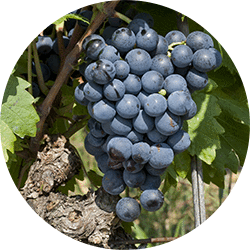Our 2017 Rhône Harvest Report
If the region was mainly spared the problems affecting quality in many Appellations regions of France and Europe, on the other hand it has suffered from a serious reduction in quantity.
Its effects over estate prices are not yet significantly felt, due to stock reserves from the 2015 and especially 2016 vintages, except for entry-level wines. But the overall reduced harvest in France will soon have an impact on the Rhône region as well, due to a domino effect.

The Southern Rhône (Vaucluse, Gard, Drôme Provençale and Southern Ardèche)
Early harvest (on average around 15 days earlier than during previous years). Remarkable health condition of the harvest, overall consistent quality of the vintage.
Reduced quantity from 20% to 40% down and even 50% down. Main areas affected: Gard region (Lirac, Tavel, the area around Remoulins), Southern Vaucluse (Ventoux, Lubéron) and the North (plain around Suze la Rousse and Ste Cécile les Vignes). However the area of the Enclave des Papes, the slopes of the Dentelles de Montmirail, the Southern Ardèche and Drôme regions emerged unscathed (with a normal harvest or just down 10%).
The reduced quantity is due mainly to grape shatter, and even “millerandage” (poor fruit set), not caused by bad flowering, but by very low temperatures earlier in the season.
but by very low temperatures earlier in the season.
Indeed, the region came very close to frost temperature on 20th and 21st April, which caused young shoots to wither away. If the flowering that followed took place normally, the damage was already done, and the weakness of the harvest was compounded by the unusual drought (no rainfall from the end of May to the harvest, except at the foot of the dentelles de Montmirail). Gigondas and Vacqueyras had some rainfall at the end of August and mid-September. Equinox showers, absent from the region this year, would have arrived too late anyway as the harvest was so early.
This equally affected the yield of white and red grapes. And what’s more, as a side remark, it seems that wild boars are increasingly partial to eating white grapes, including viognier, as their number has grown and therefore food is becoming scarce in the garrigue.
 Quality: As of 20th October, alcoholic fermentation has ended for all wines, apart from a few exceptions, and many malolactic fermentations are still under way.
Quality: As of 20th October, alcoholic fermentation has ended for all wines, apart from a few exceptions, and many malolactic fermentations are still under way.
Contrary to what was feared, wines already tasted are fruity and not too structured because of the dry weather conditions. The only negative notes: here and then, vines suffering from serious drought stress have produced grapes which had trouble ripening, creating, because of this blocked maturation, a lack of depth in some wines; there are also a few isolated risks of too early harvests (due to an understandable fear among a few wine growers of losing their already low harvest, following the extreme heat at the end of summer).
But overall the 2017 vintage seems of very good quality, on par with the two previous vintages.
The Northern Rhône
 Early harvest: 10 to 15 days earlier than usual
Early harvest: 10 to 15 days earlier than usual
Rainfall: not heavy but a bit more frequent due to a few storms during the month of August and in early September, which the Southern Rhône region did not have. However, no groundwater reserves to speak of.
Yield: almost normal in the Côte Rôtie area (down 10%), A small harvest in Condrieu (30 to 40% down) mainly because of spring frosts. In the Crozes-Hermitage and red St Joseph areas the harvest is expected to be 10 to 15% down in volume. Yields for Marsanne and Roussanne grape varieties are also very affected as a very beautiful 2016 vintage has drawn on the reserves of the vines.
Quality: The first red wines already tasted in the Northern Rhône promise a beautiful vintage, with a quality close to the 2015 or even the 2009 vintage, rather sun-drenched, powerful and good for ageing. Wines are fruity, well-structured and with an intense colour. The white wines are also remarkable.
Now that the 2017 harvest is completed and safely in their cellars, wine growers have started to worry about the prospects for the next harvest. Indeed, bearing in mind the lack of usual rainfall in September and October, vines will find it difficult to store water. The soils composition - more or less clayey – and the presence or not of a drip will greatly affect the capacity of the vines to regenerate.


